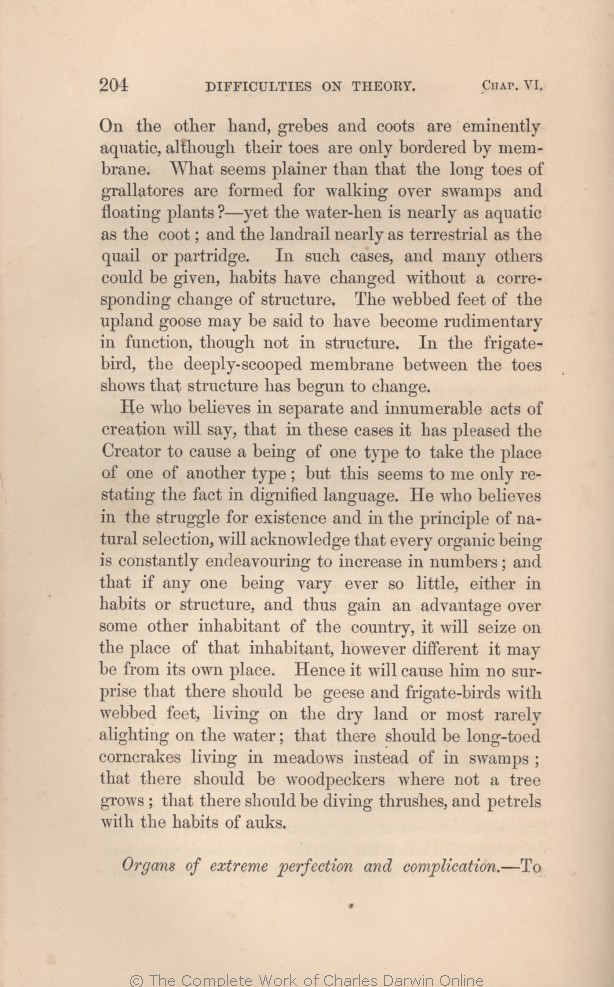On the other
hand, | hand, 1859 1861 1866 1869 1872 | | hand 1860 |
| toes 1859 1860 1861 | | toes, 1866 1869 1872 |
| of 1859 1860 1861 |
| not furnished with membrane, of the 1866 1869 |
| not furnished with membrane of the 1872 |
| grallatores 1859 1860 1861 | | Grallatores 1866 1869 1872 |
| plants? 1861 1866 1869 1872 | | plants, 1859 1860 |
| — yet the water-hen 1861 |
| yet the water-hen 1859 1860 |
| —the water-hen and landrail are members of this order, yet the first 1866 1869 |
| — the water-hen 1872 |
| is 1859 1860 1861 1866 1869 |
| and landrail are members of this order, yet the first is 1872 |
| coot; 1859 1860 1861 | | coot, 1866 1869 1872 |
| landrail 1859 1860 1861 | | second 1866 1869 1872 |
| rudimentary 1859 1860 1861 1866 1869 | | almost rudimentary 1872 |
| deeply-scooped 1859 1860 1861 1866 | | deeply scooped 1869 1872 |
|
|
He who believes in separate and innumerable acts of creation
will | will 1859 1860 1861 1866 | | may 1869 1872 |
| of 1859 1860 1861 1866 | | belonging to 1869 1872 |
| restating 1859 1861 1866 1869 | | re- stating 1860 | | re-stating 1872 |
| being vary 1859 1860 1861 | | varies 1866 1869 | | being varies 1872 |
| gain 1859 1860 1861 | | gains 1866 1869 1872 |
| country, 1859 1860 1861 1866 1869 | | same country, 1872 |
| it 1859 1860 1861 1866 1869 | | that 1872 |
| ..... 1860 1861 1866 1869 1872 | | either 1859 |
| or most 1859 1860 1861 1866 1869 | | and 1872 |
| corncrakes 1859 1860 1861 1866 | | corncrakes, 1869 1872 |
| not 1859 1860 1861 1866 1869 | | hardly 1872 |
| thrushes, 1859 1860 1861 | | thrushes 1866 1869 1872 |
| petrels 1859 1860 1861 |
| diving Hymenoptera, and petrels 1866 1869 1872 |
|
Organs
|
Organs
1859 1860 1861 | |
Organs
1866 1869 1872 |
|
of
1859 1860 1861 | |
of
1866 1869 1872 |
|
extreme
1859 1860 1861 | |
extreme
1866 1869 1872 |
|
perfection
1859 1860 1861 | |
Perfection
1866 1869 1872 |
|
and
1859 1860 1861 | |
and
1866 1869 1872 |
|
complication
.—
1859 1861 | |
complication.
—
1860 | |
Complication
.
1866 | |
Complication. 1869 1872 |
|
| To
|









